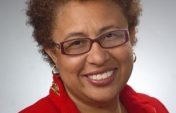by John Trybus, Managing Director
News flash: diversity isn’t just about race.
Age. Gender. Geographic location. Sexual orientation. Eating habits.
Diversity means many different things and the ability to understand audiences with unique habits and motivations is key for communicators – cause-based and otherwise – looking to get their messages heard.
Social strategist Dr. Rochelle Ford is Howard University’sassociate dean of research and academic affairs and an expert on the role of diversity in public relations. Ask her about diversity and her passion for the subject is clear.
“We’re supposed to be the voice,” Dr. Ford explains of PR professionals. “But if we don’t understand these publics that are different genders, different ethnic groups, different social-economic groups and different political groups then miscommunication happens.”
Diversity has arguably never been more important to pay attention to from a marketing perspective. The United States is on track to become a “majority minority” nation by 2050, according to the U.S. Census Bureau. What’s more is that the growth of minority and ethnic groups is already taking place at a rapid rate. In fact, the nation’s minority population grew more than three times faster than the Caucasian population between 2000 and 2006 and the trend is holding.
So what does all this mean for PR professionals? Pay attention to diversity because it’s ultimately about audience definition and subsequent messaging.
Here’s a preview of how Dr. Ford recommends getting to know diverse audiences in the cause sector and beyond:
- Get outside the comfort zone. “A lot of people just stick to themselves and their own comfort zones,” Dr. Ford says. And that’s a mistake. “Our job as public relations people is to communicate with all publics whether we’re a member of that group or not.” Getting outside the comfort zone and recognizing that we speak with (and for) diverse groups is the first step.
- The importance of exploration. Something as simple as going to an ethnic restaurant in a community you have never been can make a big difference. “Go and explore other cultures because that will open you up to a new level of sensitivity,” she recommends. Start with simple steps to immerse yourself in a new community and take it from there.
- Research, research and more research! The most important word to practitioners wanting to understand any audience is research, says Dr. Ford. “We have to be able, willing and dedicated to getting key insights into our various publics. That means not just gathering quantitative data but getting out there and talking to opinion leaders who represent minority voices in our various publics or groups.”
While there’s much work ahead to improve diversity in public relations, Dr. Ford is quick to point out that there has been much progress.
But what does success ultimately look like?
“When we’re no longer talking about diversity,” Dr. Ford suggests. “When it’s a natural thing and you wouldn’t think about having a focus group that wouldn’t represent what your communities are actually like.”
Listen to my interview with social strategist Dr. Rochelle Ford to learn more about the role of diversity management in public relations and how diverse audiences are changing the work of nonprofits.

